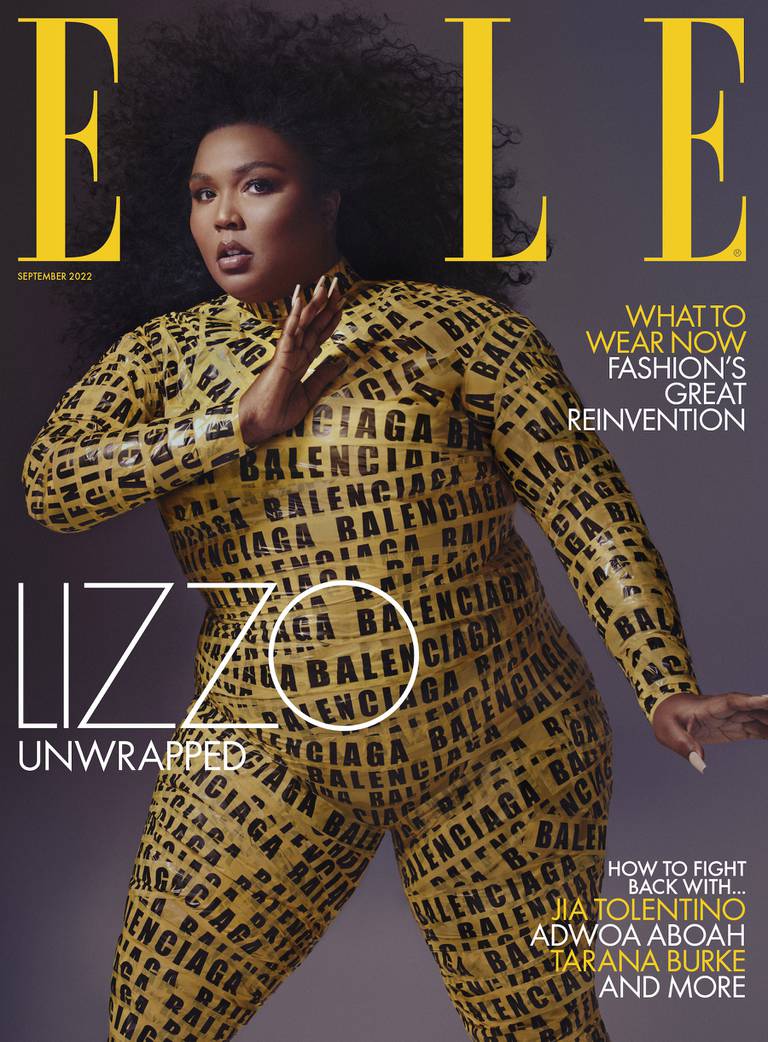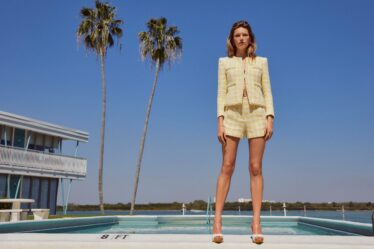
When Elle UK editor-in-chief Kenya Hunt first began her journalism career, her editors often told her that a magazine’s readers are never as smart as you think they are.
The old-school approach already felt outdated and out of touch. Now, in a post-pandemic world, debunking that notion takes on a new urgency.
“I don’t think we can create this in a bubble anymore,” the American-born editor said. “I don’t think it’s enough to just give women a shopping edit. We have to put some context to it, and acknowledge how her life looks right now.”
The approach underpins Hunt’s new vision for Hearst-owned Elle UK, which is on display in the magazine’s September issue, the first produced entirely under her editorship and hits newsstands today.
After taking the helm in March, Hunt now hopes to grow the brand’s reach and revenue by producing a magazine that speaks to “this moment,” as she terms it; broadening the scope and diversity of the readers it speaks to and more consciously interrogating the broader questions and debates women are engaging with right now. Currently, the magazine reaches almost two million users across print and digital each month, according to Hearst. (Hearst declined to revenue figures for the publication.)
Hunt is taking up the mantle of the glossy monthly at a tough time. The traditional print media model remains under immense pressure, with digital advertising revenue set to overtake print at consumer magazines, according to PWC. Many of Elle’s peers, including the American edition of InStyle and Glamour in both the UK and US, have recently axed their print publications in favour of online-only editions.
The other challenge is keeping a magazine about luxury fashion relevant amid a heavy social, political and cultural backdrop. Between soaring inflation and rising levels of poverty in the UK, the conflict in Ukraine and the global climate crisis, young women are facing a time of acute disquiet. The overturning of Roe v. Wade in the US last month, ending the constitutional right to an abortion, sent shockwaves through female communities globally.
“Context is everything. And it’s more important now than ever to really connect those dots between fashion and culture and politics, especially around climate and discussion around our budgets,” said Hunt. “It’s important to really acknowledge what we’re living through, and to speak to it in a way that feels really smart and intelligent and compelling.”
It’s not an easy thing to do well. In recent years, many magazines have actively shifted their content focus, aiming to be more inclusive and politically engaged, especially online, with mixed results. Over the pandemic, some publishers faced scrutiny from employees and readers alike for discrimination and elitism.
But Hunt brings a unique perspective to the top job at Elle. She has a long history of advocating for greater diversity within the fashion industry. In 2015, she founded R.O.O.M Mentoring, a support network and mentoring programme for young people of colour wanting to break into fashion. Over the pandemic, she published her debut book, “Girl: Essays on Black Womanhood,” a collection of writings about what it means to be a black woman in today’s world. Last year, she was honoured with the Global Leader of Change Award at the British Fashion Awards.
Hunt also has a strong understanding of the Elle brand, given her tenure as the magazine’s fashion features director and then deputy editor between 2015 and 2019. (She stepped down in August 2019 to join British weekly Grazia). Plus, as an American who has lived in London since 2008, she has a global outlook while also being well acquainted with the nuances of British culture.
“Kenya herself embodies what we all want Elle UK to be, just her take on life,” said Kate Lewis, Hearst’s global chief content officer. “As we go through such an unsteady period in global history, to have Kenya think about how we can positively move forward is just so critical. And you really see that with what she’s done with the September issue.”
Hunt’s debut issue tackles topics like safeguarding social change (“How to Create a Culture Shift”) and the future of women’s relationship with work (“Beyond the Girlboss”) alongside energetic shopping features and sparkly fashion spreads. It’s part of her mission to use the magazine as a vehicle to help readers make sense of a post-pandemic world, she said.
“Women’s magazines every September love to give you a new trend, a new season, this is how you reinvent yourself,” Hunt said. “But it’s interesting to look at this idea of reinvention during a time like this, when everyone’s having to reframe their futures because we’ve been forced to, because we’ve all just come out of this strange, traumatising period.”
She has also enlisted a range of new contributing editors, including Aja Barber, Nellie Eden, Lynette Nylander and Renia Jaz, to expand the pool of voices that will appear in the pages of Elle. Contributors to the September issue range from novelist Ottessa Moshfegh, #MeToo founder Tarana Burke and civil rights advocate Kimberlé Crenshaw, to cultural critic Jia Tolentino and comedian and writer Phoebe Robinson.
Print is only one part of a broader equation. Digital, and events in particular, will also play an important role in her strategy to grow the brand, she said, opening up more opportunities for Elle readers to engage in conversation — both with the Elle staffers, and each other — while also driving revenue growth opportunities.
Over the past year, Elle’s UK circulation has increased 2 percent, Hunt said, while ad revenue for this year’s September issue is up 25 percent compared with 2021. She declined to comment on whether the magazine was profitable.
Ultimately, Hunt hopes that Elle’s vibrancy, accessibility, and ability to intelligently engage in topical conversations while still having fun with fashion will be what sets it apart in from competitors. The idea, she said, is not to radically reinvent Elle, but build on its legacy to push it forward.
“We’re looking at luxury fashion, and we’re inspiring you to dream, but I think we’re doing it in a way that feels slightly skewed a little left of centre,” she said. “We’ve always sat in the cross section of fashion, beauty and culture; we’re adding in value systems and identity [to the mix]. I think that’s what makes 2020s Elle distinct in the marketplace.”



